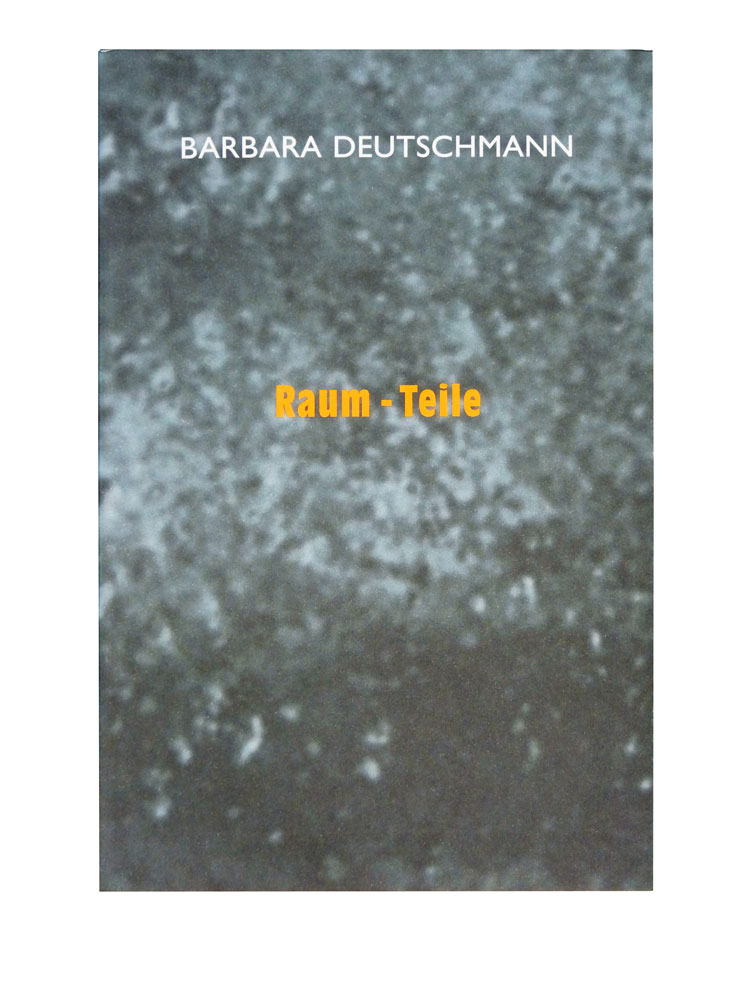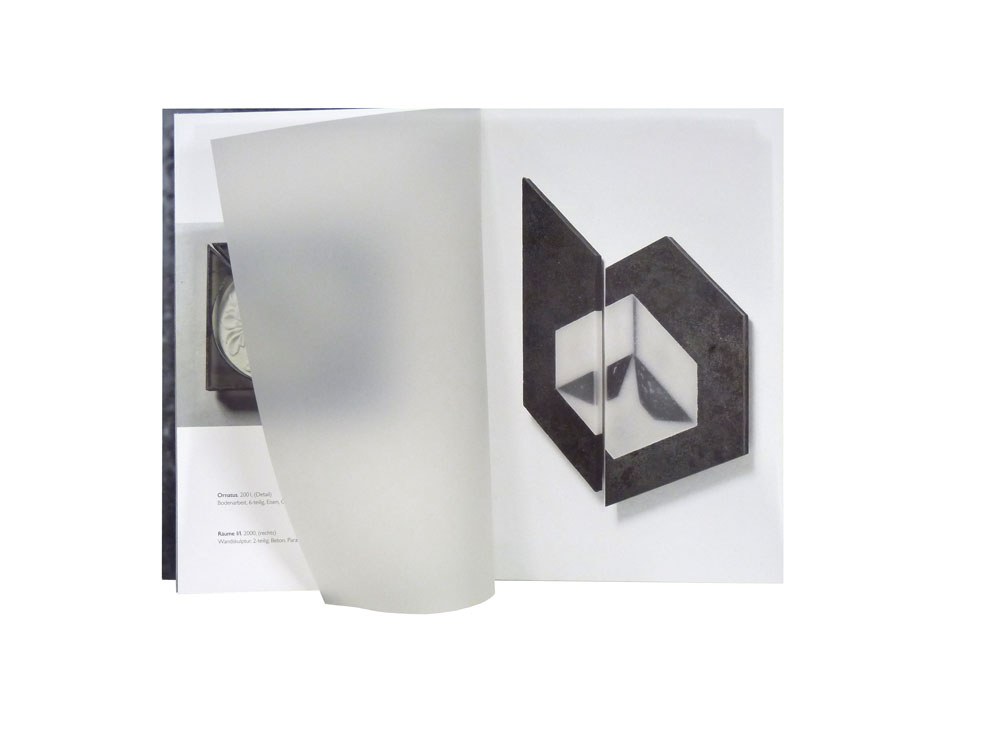Michael Stoeber 2001
Michael Stoeber, Kestnergesellschaft Hannover - Katalog "Raum - Teile", 2001 Bottomless - On Barbara Deutschmann’s New Series of Sculptures


Sculptor Barbara Deutschmann from Bremen has become known for her work that draws its force from the successful alliance and opposition of different materials. When she employs concrete and wax, casting resin and iron, these are not merely different materials interacting with each other, but rather they are the protagonists of a fundamental opposition. They initiate a dialogue between what is solid and what is soft, between something widening and something closing, between what is rough and what is polished, between what is heavy and what is light, between something mineral and something organic. This opposition appears to imply the analogy of a dialectical world organized and conceived of in thesis and anti-thesis.
„Raum-Teile“ (parts of space) is the title of Barbara Deutschmann’s exhibition in Hamburg’s Renate Kammer Gallery, a title that has dual meaning. On the one hand it refers to the fact that the inspiration for this new series of sculptures originated from the artist’s dealing with the shape of the gallery space in which the exhibition takes place. Most of the objects make clear reference to the architecture. On the other hand, making space itself the subject of her work in a more abstract and general way is also as important to Deutschmann as how we perceive it.
The second part of the exhibition title is also ambivalent. Deutschmann always represents space as part, piece, allusion and fragment. On the other hand the exhibition comprises three parts, or stations bound to each other, or acts as in a stage play. Although they were not the first to be executed, the smaller pieces present the conceptual beginning of the work. They are the closest to Deutschmann’s sketches, those minimal and tiny motifs that the artist puts down in sketchbooks reminiscent of journals. The themes of the smaller objects, „Räume II/I-XII“, are the most distant from her approach to the gallery space and write the letters of the alphabet of space in a somewhat more abstract manner.
The larger objects, entitled „Räume, I-V“, are more closely bound to the specific spatial circumstances. „Räume I/I“ thematisizes the capital of the lower shafts of the neo-Gothic columns in the gallery space. It inversely appears as a dark gray trapezoidal form made of paraffin wax and enclosed with concrete like a valuable inlay. „Räume I/II“ plays with two light surfaces that mirror the different levels of the gallery. „Räume I/III“, a two-piece corner sculpture, reproduces the movement of the ceiling arches. The dark, wax pigments trace the lines of the arches; the light paraffin portrays the white ceiling. The motif looks like an open book in a distorted perspective. „Räume I/IV“ represents a displaced perspective as well. It is the observer’s gaze from bottom to top, to whom the overlying squares of the column capital appear to be two intersecting rhombuses. Finally, „Räume I/V” treats the place where wall and ceiling meet.
The large sculptures get by with only a few colors. The concrete contains either a rust or anthracite pigment, while the paraffin wax comprises the whole spectrum of hues from a light, white to a dark, black gray. All of the objects are comprised of two parts, thus deploying a fundamental rupture that intersects each of the motifs. This rupture obviously also determines the third part of the exhibition: six floor sculptures made of white concrete. These pieces are oriented towards the vaulted ornamental ring at the upper end of the column capital, which they move down to the ground on the same scale as a bas-relief. The ring is encircled by an iron square and by light, cast resin, while the rupture splits the square in two symmetrical triangles.
The floor sculptures clearly establish the character of „Räume I und II“: symmetries and reflections on the one hand, ruptures and displacements on the other. The play of geometrical transparency and mysterious presence is more subtly structured in the wall sculptures. The relationship between line, surface and space is both intricate and irritating. Although Deutschmann’s most recent pieces are clearly more architectural, more spatial and less rhythmical than her past work, their fragmentary, displaced and broken character causes the spatiality of the „Raum-Teile“ to lack a gravitational center. The architecture falls into a bottomless pit, and its coordinates lead into a void. Thus the contours of an existential metaphor once again become visible from behind Barbara Deutschmann’s strictly conceptual sculptures. They become a sober parable of the contemporary human condition.